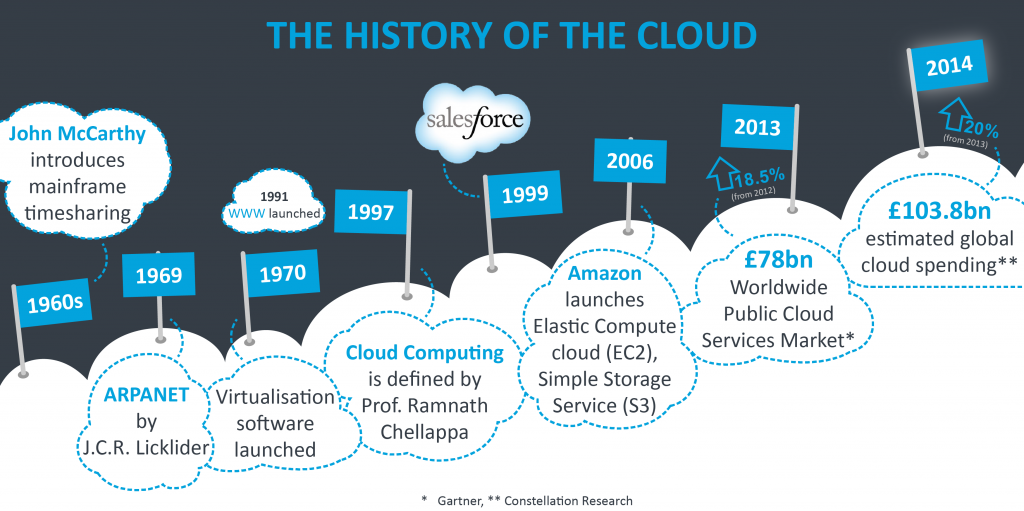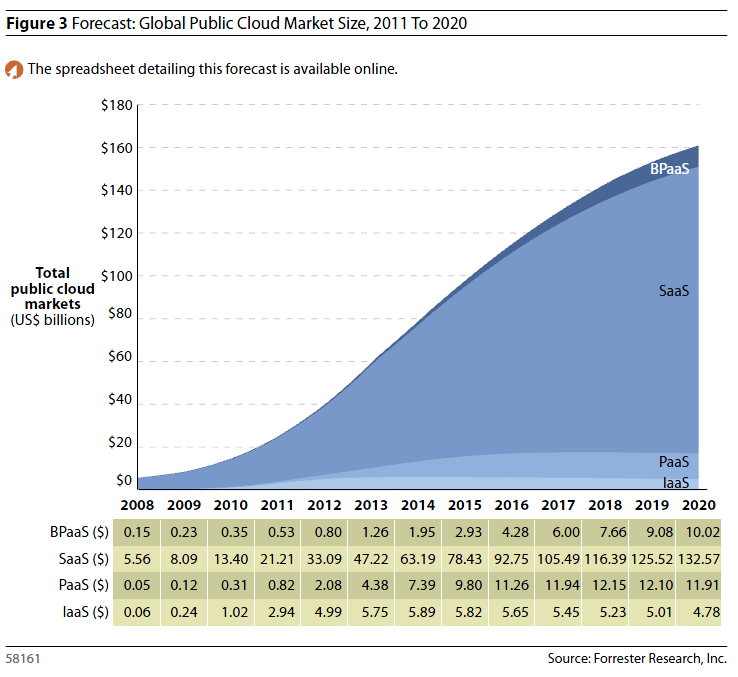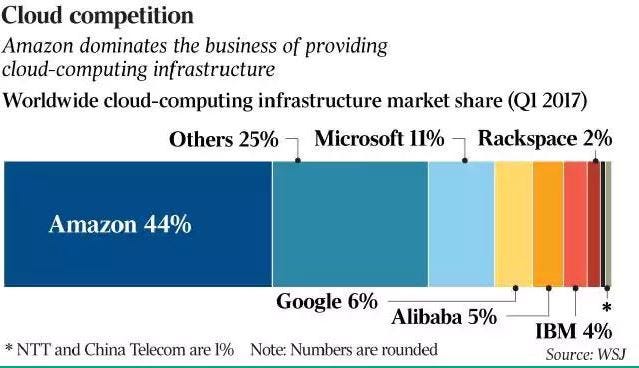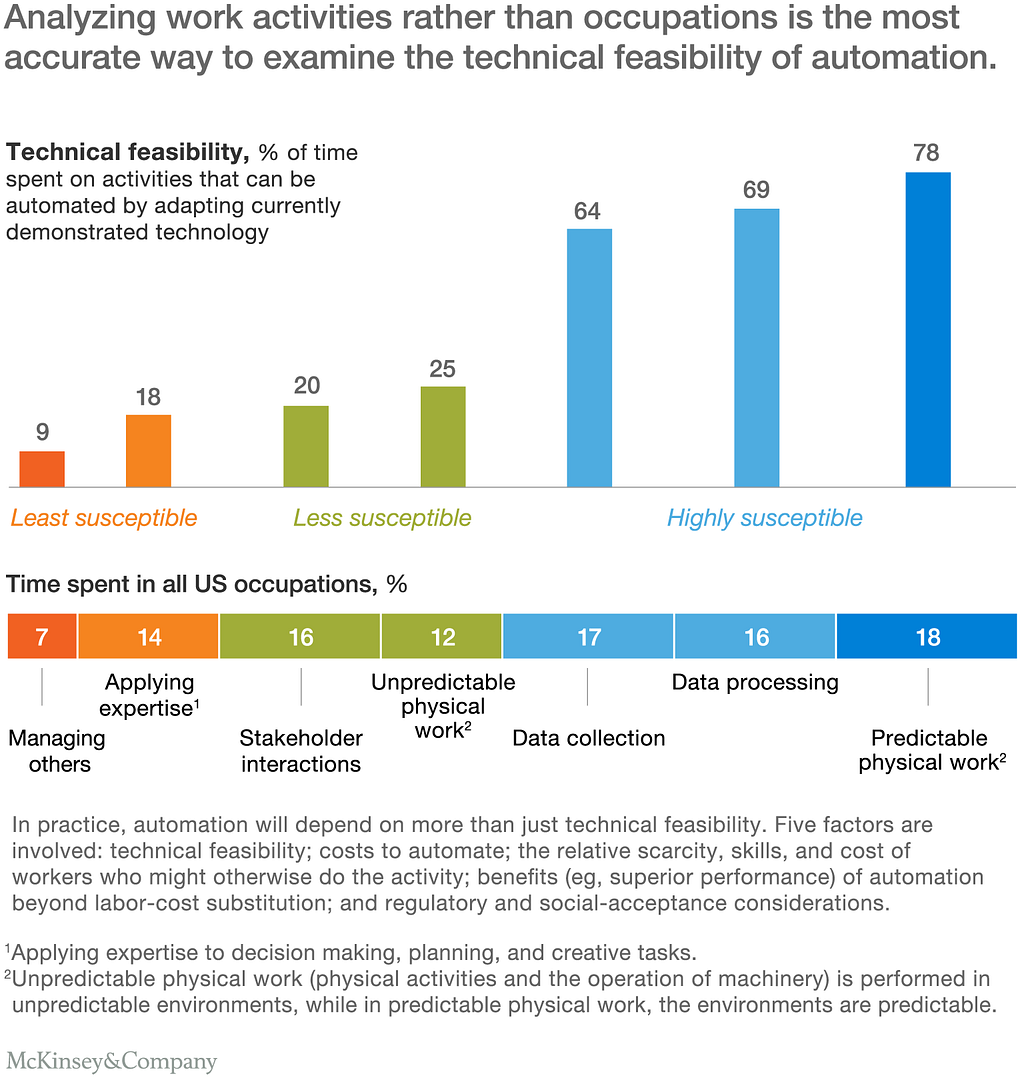Latest news about Bitcoin and all cryptocurrencies. Your daily crypto news habit.
 Pierre Châtel-Innocenti on Unsplash.com“Artificial intelligence would be the ultimate version of Google. The ultimate search engine that would understand everything on the web. It would understand exactly what you wanted, and it would give you the right thing. We’re nowhere near doing that now. However, we can get incrementally closer to that, and that is basically what we work on.” —Larry Page
Pierre Châtel-Innocenti on Unsplash.com“Artificial intelligence would be the ultimate version of Google. The ultimate search engine that would understand everything on the web. It would understand exactly what you wanted, and it would give you the right thing. We’re nowhere near doing that now. However, we can get incrementally closer to that, and that is basically what we work on.” —Larry Page
What happens when you take two fundamentally life changing technologies and merge them into an ultimate use case? The answer: businesses may become efficient but social disruption could become more prevalent. The argument for Universal Basic Income (UBI) becomes stronger as jobs get automated and vanish from the corporate landscape. However, all this is conjecture at this point. Big Tech firms are now offering Machine Learning (ML) tools on their respective clouds which allows corporate IT departments and novices to create ML applications without writing pieces of code to automate tasks. This article takes a look at a nascent boom in Research and Development (R&D) and new cloud AI platforms deployed by Google, Microsoft and Amazon. It concludes with a futuristic view of the employment landscape should these technologies succeed in creating ML Platforms as a Service (PaaS) for creating and deploying AI and ML applications.
Introduction To The Cloud
The cloud refers to the internet. Period. The internet began to be referred as a cloud because IT system diagrams would depict the internet using the cloud as a symbol. While the concept of the cloud is as old as the 1960’s with some attributing the idea to John McCarthy and others to JCR Licklider who enabled the development of ARPANET (pre-cursor to the modern internet). Irrespective of the attribution, the cloud was envisioned as a computer on the internet that would provide infrastructure such as storage, platforms such as operating systems and software applications over the internet for a fee. In a nutshell, it was conceived as renting hardware and/or software depending on the user’s requirement.
Subsequently, the launch of a Customer Relationship Management (CRM) software called ‘salesforce’ on the cloud which companies could license for a fee marked the beginning of the era of pervasive cloud computing. In fact, salesforce’s rai·son d’ê·tre. Subsequently, Amazon with the launch of the Elastic Compute Cloud which was a pay as you go cloud provided a further boost to popularization of the cloud. Today, Microsoft offers it’s cloud under the name Azure, Amazan under the name Amazon Web Services (AWS) and Google under Google Cloud Services.
As mentioned before, the cloud can host infrastructure as a service (IaaS), Platform as a Service (PaaS) and Software as a Service (SaaS). Also, the cloud can be a public (open to all on sharing basis) or a private cloud. Total market for global public cloud is estomated to be over $150 Billion in 2020.
Amazon, with its first mover advantage leads the pack in terms of global market share. Today, the market leader Amazon offers a plethora of solutions under AWS banner
Today, any business can be virtualized. What that means is that the backend becomes a service that can be rented from single or multiple providers.
A financial institution can be setup completely on the cloud and it can offer products via website and mobile apps. It could leverage networks such as the STAR network for issuance of ATM/Debit card. The Blockchain will become essential for accounting and facilitating cross border transactions. Banks can become completely digital without any brick and mortar architecture. However, that means the field would be ripe for big tech to enter and to leverage their network of users to build a loyal clientele.
Cloud computing has therefore spawned a revolution that is taking entire industries and virtualizing them. The next step is to look at human tasks that can be automated. This is where Artificial Intelligence (AI) residing on the cloud is key.
When AI Meets The Cloud
Now you know the cloud (internet, web 2.0 call it what you will) is everything today. However, challenges around 24/7 connectivity to the internet and cyber security still impede complete overhaul of IT systems across the world. That has not stopped technology companies for spending billions of dollars on research in AI. A deep learning revolution that began with Geoffrey Hinton’s back propagation is now being continued in the form of convolutional neural networks (CNN’s) and generative adversarial networks (GAN’s). The evolution in the approaches to machine learning is quite mind boggling. It’s like the torch is being passed from leader to the other across the world without any clear direction on who will emerge the likely winner. Till then, the battle rages on. The new arena is called Machine Learning as a Service (MLaaS)
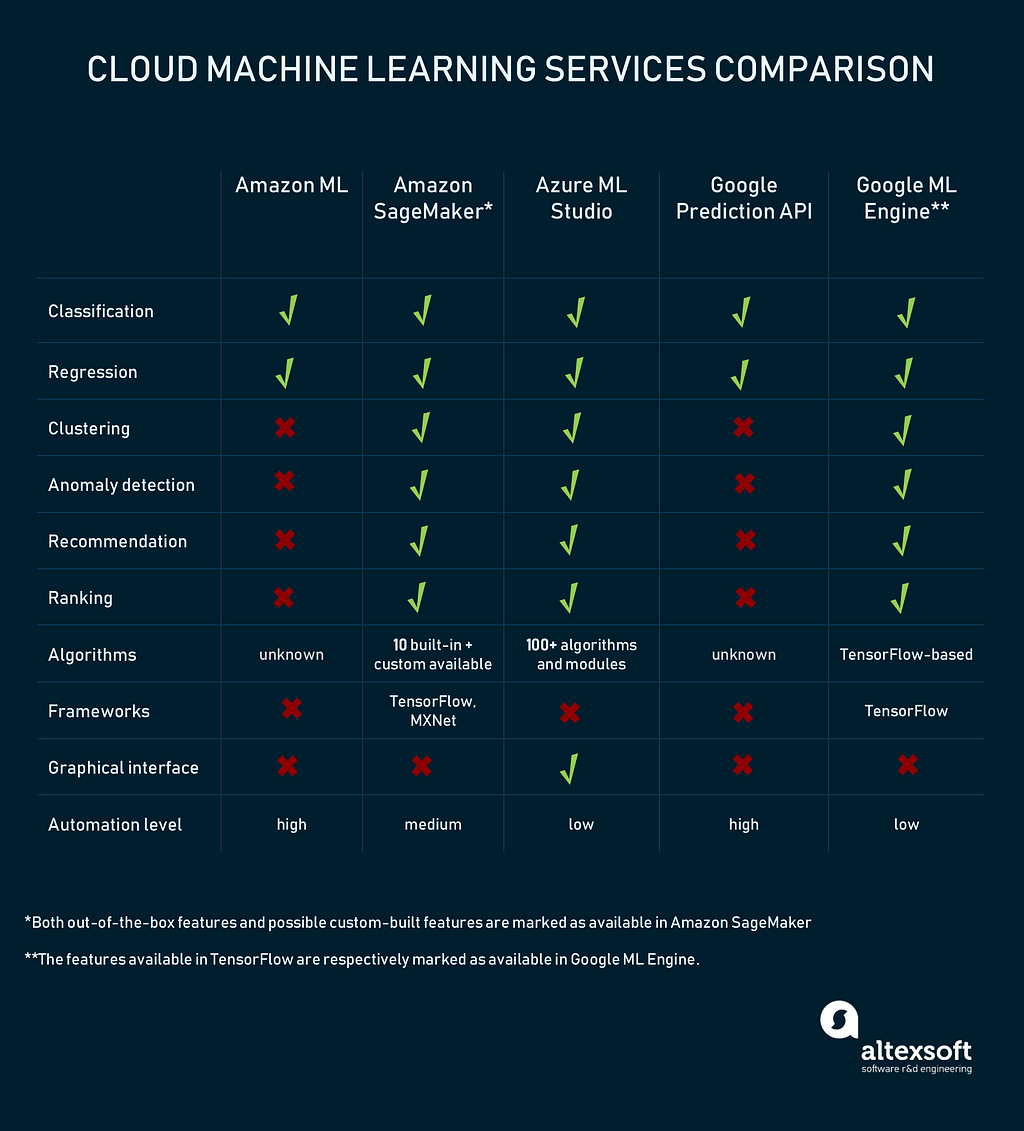 source: https://www.altexsoft.com/blog/datascience/comparing-machine-learning-as-a-service-amazon-microsoft-azure-google-cloud-ai/
source: https://www.altexsoft.com/blog/datascience/comparing-machine-learning-as-a-service-amazon-microsoft-azure-google-cloud-ai/
There are tons of stories about how Microsoft, Google and Amazon are making ML accessible not only to data scientists but to common people as well. One of the most interesting stories is how Makoto, a farmer from Japan is using AI to cultivate cucumbers using Google’s TensorFlow opensource AI platform.
Microsoft Azure AI
Microsoft announced its cloud computing service on October 2008 and released it on February 1, 2010. Elektronische Fahrwerksysteme which develops Chassis for Audi uses Microsoft Azure to analyze roads. The idea is to enable autonomous vehicles think ahead and understand the roads they are on:
As part of its research efforts, the company used Azure NC-series virtual machines powered by NVIDIA Tesla P100 GPUs to drive a deep learning AI solution that analyzes high-resolution two-dimensional images of roads (source: Microsoft)
Ubisoft, a video game publisher, runs its eSports game, Rainbow Six Siege, in Microsoft Azure:
In 2016, Microsoft created what it called “the world’s first AI supercomputer” by installing Field-Programmable Gate Array (FPGA) across every Azure cloud server in 15 countries. As per wikipedia, an FPGA is an integrated circuit designed to be configured by customer or a designer after manufacturing — hence “field-programmable.
Google Cloud AutoML, Gluon, Tensorflow
Fei-Fei Li, Chief Scientist, Cloud AI at Google is trying to make machine learning accessible to all businesses. However, she also notes that very few corporations have the talent and other resources necessary to successfully embed AI into their business applications. To support it’s bid to gain and retain leadership in the Cloud AI space, Google opened up an entire ecosystem to developers which includes TensorFlow and Kubeflow as well as it’s container based system called Kubernetes.
Newspapers such as the Dainik Bhaskar (DB corp) group in India as well as Hearst group of publications utilizes Google Cloud AI to categorize digital content across it’s digital properties.
Amazon SageMaker
Amazon Sagemaker is a platform for developing and deploying deep learning applications. It was launched in November 2017. As per Amazon:
Amazon SageMaker is a fully managed machine learning service. With Amazon SageMaker, data scientists and developers can quickly and easily build and train machine learning models, and then directly deploy them into a production-ready hosted environment.
What Is Amazon SageMaker? - Amazon SageMaker
Let’s take an example to understand how Amazon’s applications help integrate machine learning into everyday life.
Alex Schultz, a father with no deep learning experience built an application that reads books to his kids using Amazon Deep Lens called ReadtoMe. Alex built the application using opencv, Amazon Deeplens camera, python, polly, tesseract-ocr, lambda, mxnet and Google’s tensorflow. This example demonstrates the fact that ML is accessible and can be embedded in real life through a variety of applications which strengthens the argument that is may become all pervasive and ubiquitous.
Co-Opetition
On October 12, 2017, Amazon Web Services and Microsoft announced a new deep learning library, called Gluon, which allows developers of all skill levels to prototype, build, train and deploy sophisticated machine learning models for the cloud, devices at the edge and mobile apps.
AI is a very broad term that contains many building blocks such as the cloud platform, the programming platform, the API’s as well as the integrated circuits. Such a wide variety of inter-related and continuously evolving technologies with a wide array of applications in business and daily life provides big tech companies an edge. Who among them is the first among equals is for the future to say.
Future of Work
Every company is becoming a technology company. If not, they need to be aware of the mega trends and deploy resources wisely to prevent obsolescence.
Financial institutions today prefer to rent Software as a Service (SaaS) because developing software is not their core competency. Also, there is so much churn in technology today that being nimble and flexible is key to survival and growth.
Imagine a scenario where you wanted a certain sales report or a business review prepared for senior leadership. You could just give a voice command to a digital assistant (AI) to give you a year to date national report of all sales during 2018. The data would be stored on the same cloud as the AI assistant is. The AI bot would then organize data and send it to an output of your choice which could be an augmented reality screen. Now, extend this scenario to all routine and non routine tasks that can be automated and you can imagine how scary AI as a technology can be. It is like technology just gobbled the world of work as we know it.
At first, routine tasks can be automated. Later, AI can become a recommendation engine and finally it will be able to take decisions on its own. There are varying estimates on the extent of automation in the next decade or so. However, the takeaway for most is that learning new skills or treating life as a continuing education should be the mantra.
While technological disruption is continuing its march into the workplace, AI and its effects are not pervasive enough to cause social unrest. Yet. Therein lies the ethical dilemma.
For instance, politicians in developing economies such as India are already hearing distressed voices complaining about the loss of driving jobs due to automated vehicles. When an automated Uber killed a pedestrian in Arizona, the incident gave rise to suspicions around the viability of automation. As with Bitcoin, CRISPR CAS 9 Genetic Editing technology, AI regulation will need to be ahead of the game.
However, for common folk like us, learning just acquired a whole new practical meaning.
Those Machines In The Cloud was originally published in Hacker Noon on Medium, where people are continuing the conversation by highlighting and responding to this story.
Disclaimer
The views and opinions expressed in this article are solely those of the authors and do not reflect the views of Bitcoin Insider. Every investment and trading move involves risk - this is especially true for cryptocurrencies given their volatility. We strongly advise our readers to conduct their own research when making a decision.
